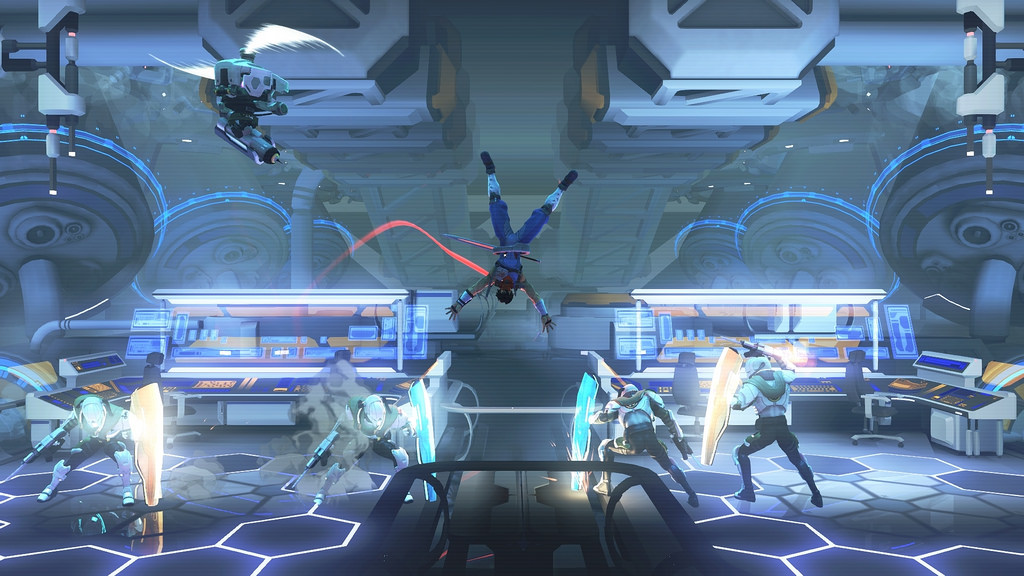Award: Best Slicing-Dudes-Like-Butter Game
Strider returns in 2014 to…well, not excite most people a whole lot. But excite me a whole lot! Reboots are tricky, but I think this one works surprisingly well.
I was one of those unfortunate souls that had the opportunity to purchase Strider and Strider 2 many times, yet somehow always failing to make the leap. That surprises me! Strider remains one of Capcom’s seminal arcade releases, literally becoming a selling point for the arcade port-heavy Genesis in the 16-bit console wars. And yet, I never actually played a Strider game until Double Helix’ recent Strider reboot. I’m sure series purists will say that it sullies the series formula, but Strider 2014 gave me the most wonderful four hours of callous-creating Metroidvania fun I’ve had in a long time.
If anything, Strider has always been about pacing. You are a sort of future ninja, and in video games ninjas do not often hide and sneak. They slice through any and everything in their path to obtain their objectives. What Strider does differently is its eight-way directional slicing and stellar platforming. If you play proficiently enough, you never stop moving, and there’s something about the driving forward momentum that just clicks in your brain after a while. The flow sets in, and you literally carve a path through robots, ninjas, monkeys, birds, and who knows what else in your Saturday morning cartoon quest to defeat the evil Meio and his empire.

Capcom’s reboot merely affixes a formula more palatable to the modern video game audience. The controls and pacing, from my experience, recreate that same sense of flow and speed, but now they add an exploration element to the proceedings. Most of the time, the game tells you where you need to go in the most explicit terms, but exploring yields health, energy, and damage upgrades that you’ll probably want. Even so, the upgrades don’t seem all that necessary. The game rewards you with new abilities and attacks rather than statistics boosts and upgrades, and the number of weapons (even the Ourobouros returns!) is definitely atypical for a platformer like this. I especially like the projectile reflection Plasma, which rewards good timing against ranged enemies.
Usually I try my best to skip to the end of such games, but Strider had me reveling in the combat mechanics. They work so well, I went out of my way to find items just to fight more enemies. That’s not to mention the boss fights, which follow the old “find out the pattern” model to the letter; each of them present new challenges to your arsenal that you need to think about. Unfortunately, the game itself never presents a stiff enough challenge to take advantage of its bosses.That’s why I get to play on Hard mode now, which makes me happy!
There are few games which really capture “retro” without just being a graphical facsimile of one, but Strider hits the nail on the head. Now to pick up Strider 2 on PSN…
